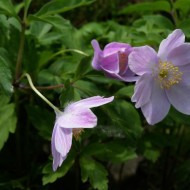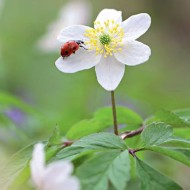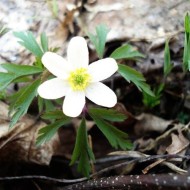Delicate primrose in the garden: features of growing anemone oakravna
Content
Description and characteristics of the Dubravnaya anemone
Anemone can be considered a grass, because it belongs to the category of herbaceous plants and is low-growing. The plant is also known as anemone nemorosa (lat. Anemone nemorosa), which means "daughter of the winds." This is due to the fragile structure of flowers that sway even from a barely perceptible breeze. Popularly, decorative culture has several names:
- Canapelka. Due to the similarity of the leaves to hemp.
- Buttercup. Associated with belonging to the Buttercup family.
- Snowdrop. The name originated from the similarity of the flowers.
- Kuroslep. Due to the toxic effect.
- Freckles. Associated with the flowering period.
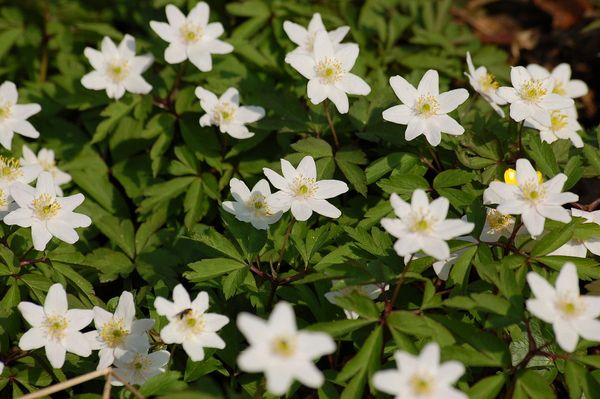
Anemone is included in the Red Book, because after the flower is plucked, its root system dies.
Video "Caring for anemones in the garden"
This video will show you how to plant and grow anemones in your garden.
Botanical portrait
The anemone is characterized by the presence of a straight stem topped with a snow-white flower. The plant reaches a height of 15–20 cm. During the flowering period, which lasts from mid to late spring, the culture forms flowers with 5–6 petals. At the beginning of summer, a box with seeds ripens. Some varieties of anemones have double petals of pink, lilac, red and blue.
Habitat
This delicate primrose grows in deciduous forests. In spruce, the plant is almost impossible to find. Anemone is common in western Europe, in the Mediterranean forests. It often grows in small clusters.
Healing properties
Anemone is full of elements such as:
- vitamin C;
- anemonal;
- organic acids;
- alkaloids;
- tannin.
The rich chemical composition determines the healing properties of the plant:
- Pain reliever. The pain threshold after using medicines based on anemone is significantly reduced.
- Diaphoretic. Removes toxins from the body.
- Expectorant. Promotes active excretion of phlegm.
- Antifungal. Acts as an antiseptic, destroying pathogenic microflora.
- Bactericidal. Eliminates infectious agents.
Common gardening species and varieties
This perennial plant has an early ripening period and is undemanding to care. That is why many gardeners plant many different varieties of anemones in their summer cottages. The most common among them are:
- Isabell. It is characterized by a lilac shade of petals.
- Dark Leaf. It features white flowers and black leaves.
- Hilda. Terry inflorescences, have 2 rows of petals.
- Vestal. Double flowers have a characteristic "pompom" in the center. Vestal is characterized by late ripening.
- Blue Bonnet. A low-growing anemone that blooms profusely with bluish flowers.
- Birka. A characteristic feature is the asymmetrical structure of a lilac flower.
Popular types of anemones are:
- Altai. Grows in Siberia. It begins to bloom in mid-spring.
- Buttercup. A low-growing crop that has yellow flowers.
- Blue. It grows up to 25 cm. It blooms in early May.
- Dubravnaya. Distributed mainly in central Russia. Has snow-white inflorescences.
- Delicate. It grows up to 15-17 cm in height. The flowers are blue.
- Intermediate. A hybrid variety obtained by crossing the oak and buttercup anemone.
Planting and growing conditions
Many gardeners who are attracted by the appearance of a garden beauty decide to plant it on their site. There are several significant aspects to this process.
Site and soil selection
The oak anemone loves shade, so the best place for planting will be areas around trees with a dense crown. The main condition of the soil is its fertility. It must be porous so that oxygen can easily enter the deep layers of the soil.
Planting a flower
It is necessary to plant roots in pre-made holes at a shallow depth. Optimally - 7-10 cm. After placing the seedling in the soil, it is important to distribute its roots over the entire area of the fossa. Do not water the plant at this stage.
In the event that the gardener uses the seed method of planting, then this should be done before the onset of winter or at the beginning of spring. Before the procedure, it is worth carrying out a stratification.
Anemone takes root pretty quickly. The first shoots will appear as early as 20 days after sowing.
Watering and mulching
The plant does not require artificial watering, because the culture is wild. However, if the summer is very dry and the soil is very dry, you can resort to light moistening with a little water.
After the watering procedure, it is recommended to mulch the root area of the plant with dry foliage. This will significantly affect the moisture retention in the soil.
Top dressing
The anemone is often fed for 2 years after planting. For this, organic compounds are used in a liquid consistency. At the same time, it is categorically impossible to fertilize the plant with manure. Top dressing should be done when the buds begin to tie.
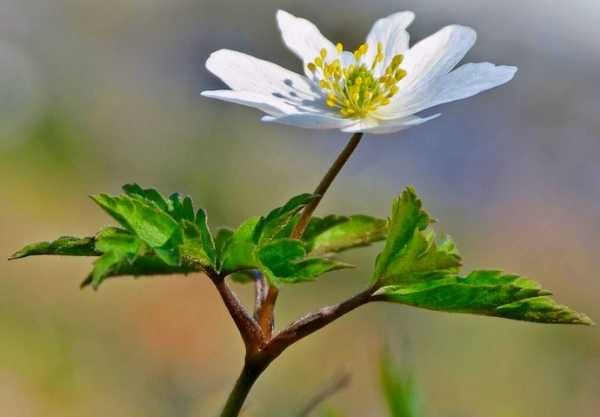
Wintering
For the winter, the anemone needs to be dug out of open ground and placed in boxes with peat or sand. From time to time, the contents of the containers should be moistened. Store the anemone in a cool place.
If the gardener decided to leave the tubers in the soil, then it is necessary to cover them with fallen leaves, peat, compost. With the arrival of March, you can build a small greenhouse over the tubers. This will significantly speed up the formation of young shoots.
Reproduction of the oak anemone
There are several methods of plant propagation. Each of them has its own characteristics.
Seed method
To germinate seeds, you should follow the following algorithm:
- Carry out stratification.
- Send to a container with peat or sand, slightly moisten.
- Keep at a temperature not exceeding 5 ° C.
- With the appearance of the first shoots, transplant into the ground, covering with dry foliage.
True, the method is not very effective, most of the seeds never germinate.
Reproduction by roots
This method is characterized by the following actions:
- Division of the root system into segments.
- Their further seating.
The roots must be rinsed with water before dividing.
The segments should be planted in a container; they are transplanted into the ground only after a year.
Dividing tubers
The method is characterized by the division of the anemone tuber. In this case, it is important that each tuber has several buds. The procedure is carried out at the end of August, when the plant enters a dormant period. This breeding method is relevant for the following types of anemone:
- Caucasian;
- tender;
- apennine;
- crown.
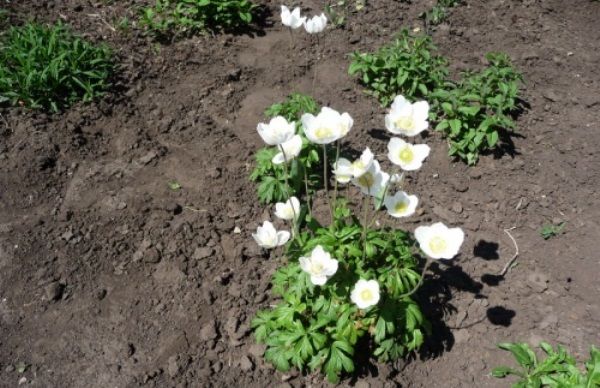
Protection against diseases and pests
Judging by the description of the culture, the anemone is a fairly resistant plant.She quickly adapts to minor temperature fluctuations, can do without soil moisture. However, the plant is often exposed to pathogens of serious fungal diseases.
The most common diseases of anemone are:
- sclerotinosis;
- downy mildew;
- anthracnose;
- gray rot;
- viruses.
The culture often suffers from aphids, the symptoms of which are leaf rolling.
In the case of a serious damage to the plant, drugs are used, such as "Biotlin", "Baktofit". Often, gardeners save their pet using folk methods: tobacco dust, a solution of potassium permanganate. In critical cases, the affected plant is completely dug up to prevent the spread of the disease to healthy anemones.
Anemone is a delicate plant that will decorate any garden. It can be planted in combination with other crops or separately. The plant does not require much maintenance, but it still needs key aspects of growing.

